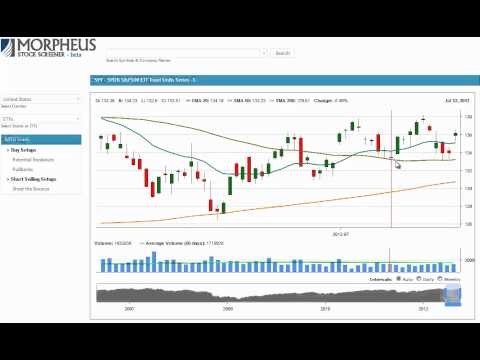How To Use Fibonacci For Swing Trading Stocks And ETFs
Post on: 16 Март, 2015 No Comment

Jan 27, 2012
0 Flares LinkedIn 0 Twitter 0 Facebook 0 Google+ 0 0 Flares
One of the most frequently asked questions we get from subscribers is how we go about determining stop loss and target prices on each days stock and ETF trade setups in our short-term ETF and stock trading newsletter. In addition to volume, trendlines, and support/resistance levels, one of the technical analysis indicator we sometimes use for predicting anticipated levels of support and resistance is called Fibonacci. In this article, we will give you a rather unique background on the history of Fibonacci, and then relate how you can apply the strategy to your stock and ETF trading analysis .
Leonardo de Pisa de Fibonacci & Fibonacci Theory
The great Fibonacci was a 13th century Italian Mathematician, who among other things, brought the Western world the Arabic/Decimal system, an explanation of the mathematics contained within the Great Pyramids of Giza, and the Fibonacci Summation series. Of course, we are most interested in the Fibonacci Summation series and its importance to predicting price movements in the equities markets, which we will cover later in this article.
Fibo here, Fibo there, Fibonacci everywhere!
Fibonacci numbers and ratios are everywhere. The human body has 2 arms, 2 legs and 1 head which total 5, a Fibonacci number. Humans also have 5 senses. The ear is a perfect Fibonacci (Golden) Spiral. The eyes are located exactly 50% from the top of the head while the nose is approximately 61.8% from the top of the head (both Fibonacci Ratios). Artists have known and used this knowledge for centuries.
Furthermore, the nautilus shell, galaxies and sub atomic crystals have been found to be perfect Fibonacci (Golden) spirals. On many types of trees and plants, the branches grow in a spiral fashion. This phenomenon is known as spiral phyllotaxis. The important point to be made here is that the Golden Ratio and Fibonacci numbers exist everywhere in our universe.
Order out of Chaos: The Fibonacci Summation Series
The Fibonacci Summation Series is derived by: 1) Taking any two numbers and adding them together to get a third number, 2) Then adding the 3rd number (next) number in the sequence to the number before it to get the 4th (next) number in the sequence and so on. It can be illustrated as follows: 0+1 =1, 1+1=2, 2+1=3, 3+2=5, 5+3=8, 8+5=13. Therefore the basic sequence would like this: 0,1,1,2,3,5,8,13,21,34,55,89,144,233. To mathematicians, this additive series is based on the equation: Phi +1 = Phi squared. What is absolutely fascinating about this sequence is that if you take any number in the sequence and divide it by the number after it in the sequence (after 8 additions or sequences), you always get the ratio 0.618. Along the way to deriving the ratio 0.618, you will get a sequence of numbers that oscillate around 0.618 (the first ratio just a bit lower than 0.618 and the next ratio in the sequence just a bit higher than 0.618). This oscillation around 0.618 is mathematically important to understanding the wave like oscillations found in the expansions and contractions in the markets! Further, if you take any number in the sequence (after the 8th sequence) and divide it by the number before it in the sequence, the resulting ratio is 1.618. The number 1.618 is know in geometry as the Golden Ratio and is denoted by the Greek letter phi. To avoid getting too complicated, suffice it to say that the Golden Ratio is an important number in geometry and from it can be derived the Golden Rectangle and a Golden Spiral which can further be related to geometric characteristics of stock charts as we will soon see. Its now time to see how Fibonacci ratios inter-relate.
Below is a daily chart of the Dow that perfectly illustrates how deadly accurate Fibonacci can be when applying it to predicted price movements:
Fibonacci retracement levels applied to Dow Jones DIAMONDS ($DIA)
The black circles you see represent where the Fibonacci lines were drawn from. The orange circles illustrate how the retracement (rally) off the lows stopped upon running into Fibonacci resistance levels. Notice how the rally stopped twice upon running into the 0.382 level and topped out upon rallying into the 0.50 level. In general, we have found the 50% level to be important because it often is the point at which a stock or ETF will reverse and resume the direction of its prior trend. In this case, DIA never made it beyond 50% off the lows, which indicates the downtrend has not yet been broken.
If you went long DIA in July (the year is irrelevant), you could have used the 0.382 and 0.50 retracement levels as targets to take profits on your long position. In addition to targets, you can also use retracement levels for setting stop losses. The best part is that Fibonacci retracements work well on any time frame.
We could write an entire article on the best way to draw the Fibonacci lines, but suffice it to say you want to draw the lines from either the high of the most recent rally to the low of the selloff OR from the low of the selloff to the high of the rally. The direction you draw the lines depends on whether the index is in an uptrend or downtrend. After the lines are drawn, 0.382, 0.50, and 0.618 are your primary retracement levels. Secondary, less significant levels are at 0.236 and 0.764. Bear in mind that the longer the time frame, the more accurate Fibonacci will be. In addition, you can also use multiple time frames to look for Fibonacci convergence, which is even more powerful.














